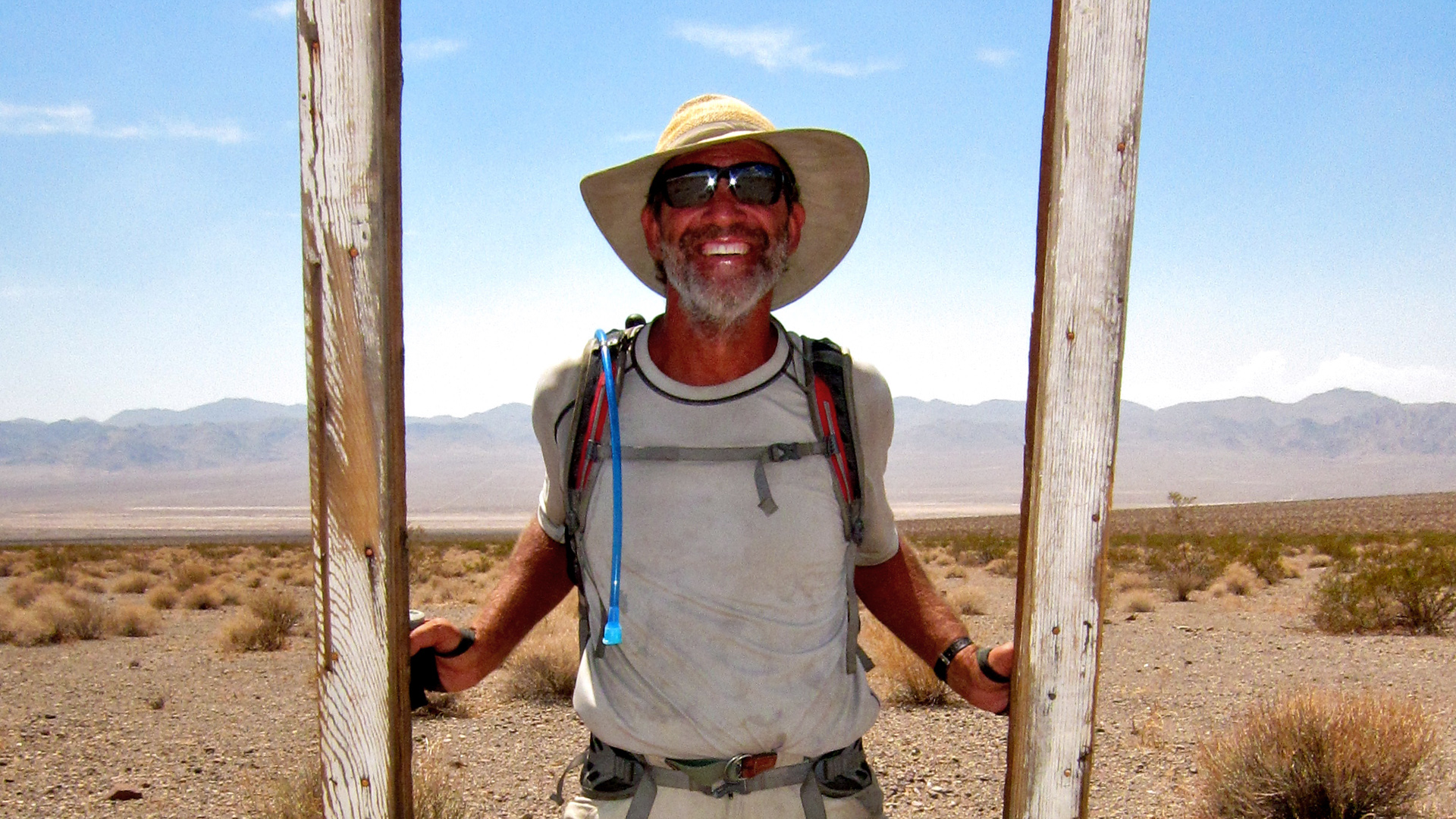
For ultrarunner Marshall Ulrich, Death Valley National Park had been both his accomplice and adversary, the site of intense suffering and great achievement.
Marshall Ulrich knows the intensity of Death Valley National Park all too well – the sun leaching away his energy and the heat’s relentless assault, like being slow-cooked in an oven set to low.

In 2012, Ulrich spent 16 days circumnavigating Death Valley, the first ever quest to travel 425 miles around the edge of the park, with fellow endurance athlete Dave Heckman. The pair were climbing out of Saline Valley, and they’d run out of water on the way to their next buried cache of supplies. “I almost died on the side of this mountain,” Ulrich remembered. “I was more or less going in and out of consciousness, and Dave was in better shape at the time physically and mentally. He was better hydrated. He just kind of bailed me out – got me up off the ground and got me moving again two or three times.”

As its very name implies, Death Valley is a dangerous place. The largest national park in the continental US, its 3.4 million acres cover extremes of geography and climate: the Badwater Basin salt flats at 282ft below sea level, Telescope Peak at 11,000ft high, temperatures that can reach 120F. Many visitors retreat quickly to the relief of an air conditioned car or hotel room. But not Ulrich. The 64-year-old athlete and ultramarathoner has run more than 4,000 miles in and around Death Valley National Park.
I almost died on the side of this mountain.
In addition to taking on the first circumnavigation of the park with Heckman, Ulrich completed the first self-contained and unassisted solo crossing (for which he dragged his water and food supply on a 220lb cart) and a quad crossing, which involved running across Death Valley four times in a row for 586 total miles. This year, Ulrich will return to the park for his 21st running of the Badwater Ultramarathon – an iconic race considered one of the world’s toughest – that sends competitors from Badwater Basin to the Mount Whitney Portal, covering 135 miles and 14,600ft of elevation gain in July. Every year, Ulrich tacks on an additional 11 miles at the end, summitting Mount Whitney and running from the lowest point in the contiguous US to the highest, because that’s what the original Badwater racers did – and because he can.

With all the time he’s spent traversing the park on foot, Ulrich has developed a unique relationship with Death Valley. It’s been both his accomplice and adversary, the site of intense suffering and great achievement.
His many adventures there have also afforded him the chance to see areas of the park that many visitors miss, like Darwin Falls, where spring-fed waterfalls flow year-round (an alien sight within the desert landscape), or Lee Flat, where a stand of spiky Joshua Trees presides over the valley. On the Badwater route, he looks forward to a glimpse of Artist’s Palette, where the minerals in the soil paint the hills in watercolour shades. He heralds how the place makes him feel small amidst the immensity of its vistas.

But running also offers the opportunity to see Death Valley more intimately. “Every once in a while you’ll see a little wildflower, and it’s surviving in one of the harshest conditions in the world and yet it has such an innate beauty to it,” Ulrich said.
More than anything, his time in Death Valley has left him with an immense respect for the park, both in its brutality and beauty: “There’s this violence that can happen, but then when it’s calm and the stars come out at night, it cannot be more tranquil and peaceful. I don’t think there’s any other place in the world where you can get that.”

If you liked this story, sign up for the weekly bbc.com features newsletter, called “If You Only Read 6 Things This Week”. A handpicked selection of stories from BBC Future, Earth, Culture, Capital, Travel and Autos, delivered to your inbox every Friday.